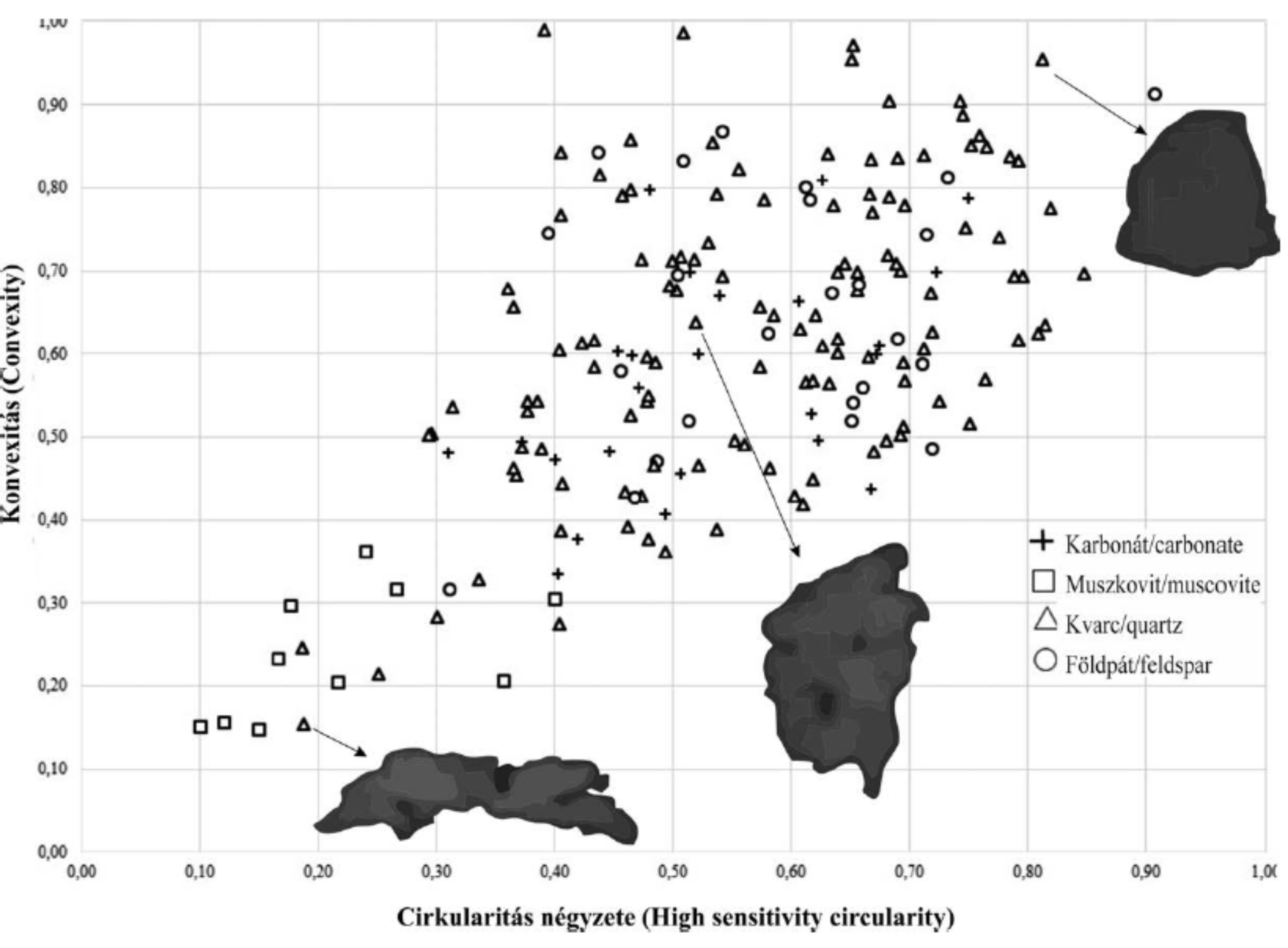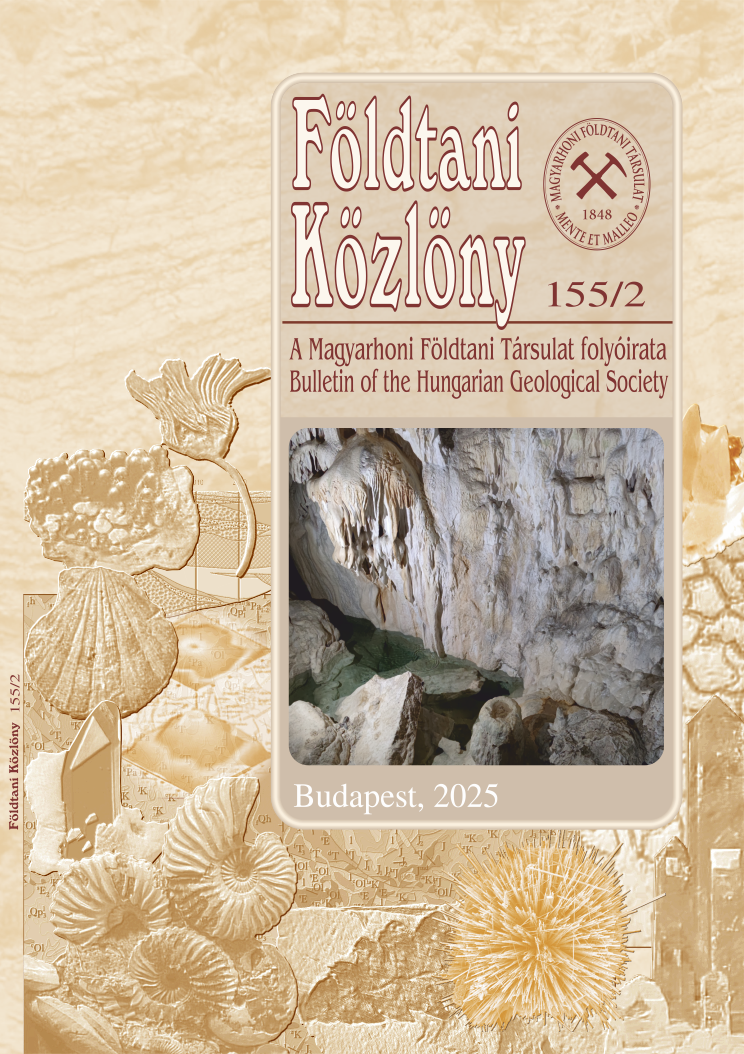Grain size and particle shape analysis from thin sections of sandstone samples
Abstract
Sedimentary transport processes and pore water- rock interaction may cause dissolution and precipitation of different minerals. These processes influence the particle shapes and grain size. In this paper we analyzed thin sections of sandstones with 2D image analysis (Morphologi G3ID) to specify the most characteristic shapes of the different minerals and pores.
The studied samples originated from the Pannonian Basin, which was filled by delta and fluvial sediments in the Late Miocene. The previous studies show that the detrital minerals are quartz, muscovite, dolomite, K-feldspar and plagioclase. The main diagenetic minerals are carbonates (calcite, Fe-dolomite, ankerite, siderite) and clay minerals (illite, kaolinite).
We measured the sandstone samples by Morphologi G3ID, which is a method of 2D image analysis combined with chemical characterization (Raman spectrometer). The results show that HS circularity (high sensitive) is in correlation with aspect ratio, furthermore, convexity and HS circularity also showed interdependency. According to the results, based on morphological parameters muscovites form a well separable group (HS circularity ~ 0.36; aspect ratio ~0.36, convexity ~0.86). The quartz and feldspar grains show high variability of the shapes (HS circularity: ~0.2-0.9, aspect ratio: 0.2-1, convexity: 0.8-1), because these minerals are detrital minerals and sometimes arrived as lithic fragments, from which one part dissolved. The shape of carbonate minerals can be described with the following parameters: HS circularity 0.3-0.8, aspect ratio 0.3-0.8 and convexity 0.8-1. The shape of carbonate minerals depends on the original pore size and shapes, because these minerals are mainly of diagenetic origin. Dolomite is detrital, however the shape of these grains depends on the diagenetic ankerite, because ankerite replaces the rim of dolomite.
















